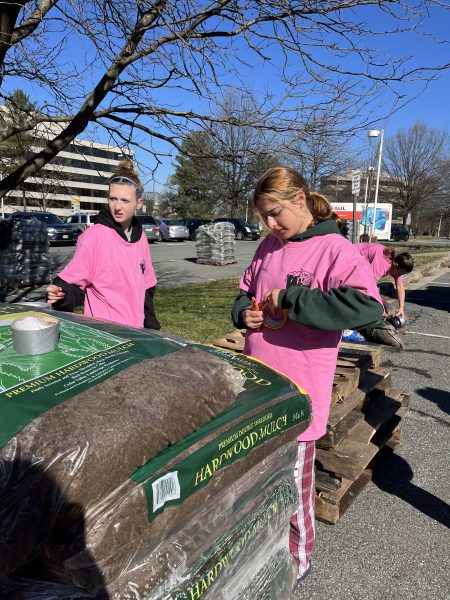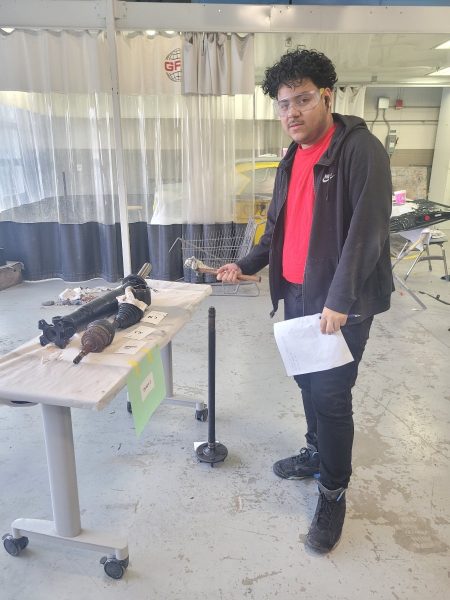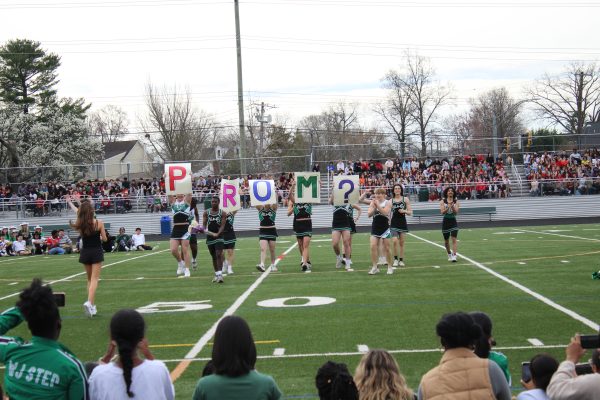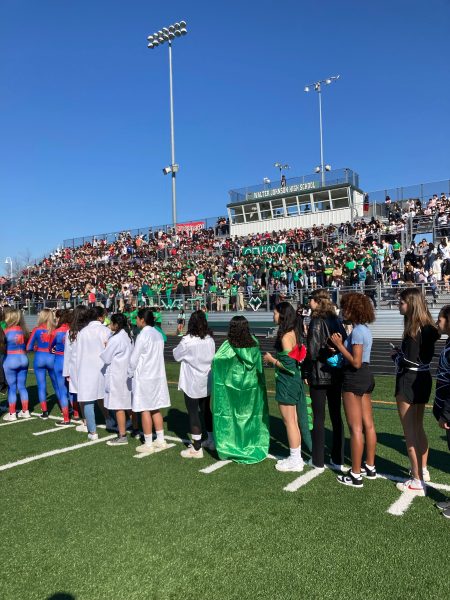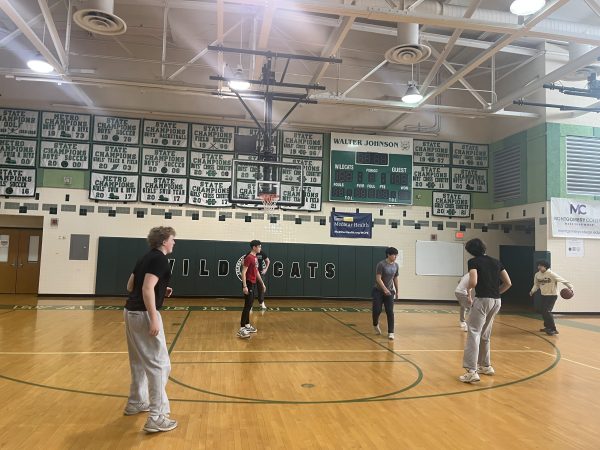S*T*A*G*E Crew Stages Masterpiece
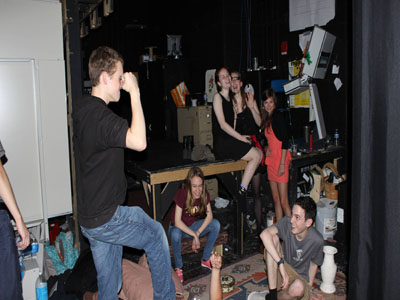
WJ S*T*A*G*E members hang out backstage during reahersal for “Aida”.
When many people think of the spring musical, they probably imagine people singing, dancing and acting on the auditorium stage. Unfortunately, many don’t realize how much effort and dedication is put in behind the scenes as well.
WJ S*T*A*G*E crew’s hard work paid off on April 25 and 26 and May 2 and 3 when the spring musical, “Aida” was staged.
“All things considered, ‘Aida’ looks like it’s set up to be the biggest and quite possibly best show in WJ history, both on the cast side of things as well as the crew side,” said senior Will Combs, on what was his sixth S*T*A*G*E production.
“Aida” is a musical about a Nubian princess of the same name who is captured by an Egyptian captain, Radames, who then falls in love with her. Radames gives Aida away as a handmaiden to an Egyptian princess, to whom he happens to be engaged.
The first thing the crew did to prepare for the show was read through the script and annotate it for information pertaining to what the crews would be in charge of, such as the set, lights, sound, makeup, props and rigging. They then went on to draw up set designs, costumes and props. After the technical director, professional theatrical technician James Mulhern III, approved the crew’s plans, they began construction of set and props.
“We prepare [for a show in] production meetings where production staff figures out how to make the [director’s] vision for the show a reality, and then the crew meets to hang [the] lights, build the set, paint the set, make costumes and props…[Then the] cast [begins rehearsing],” said junior Michelle Sparks, assistant to the technical director.
When carrying out the director’s vision, the time period and setting of the musical provided some challenges for the crew.
“Costumes provided an interesting challenge for ‘Aida,’ mainly [due] to the fact that in third dynasty Ancient Egypt, almost all [of] the men were bare-chested and everyone wore white linens , [which is] not very stimulating for a theatre production,” said Combs.
To deal with this issue, the crew took some poetic license with the costumes, making it so that no one was bare-chested, and so that many of the royal characters’ costumes are vivid and lively.
“Strictly from a props perspective, we immediately started researching the time period, third dynasty Ancient Egypt, to find the right motif for the props we would eventually be getting [or] building,” explained Combs. “In the latter stages of construction, the crews really started collaborating with one another to finalize designs and get everything working cohesively to form a complete picture.”
Both Combs and Sparks said they have learned a lot from working on the show.
“I learned a lot more about the design process for a show [and] what role a designer plays in a show,” said Sparks.
Combs also feels that the show, as well has his experience with S*T*A*G*E, was a valuable experience.
“S*T*A*G*E has taught me to trust myself, my work, and my peers, not just in theatre, but in a all aspects of my life,” he said.
Your donation will support the student journalists of Walter Johnson High School. Your contribution will allow us to purchase equipment and cover our annual website hosting costs.
This is senior Amanda Gross’s third year writing for The Pitch Online and her second as Co-Online Editor-in-Chief. She is thrilled to be a part of...

